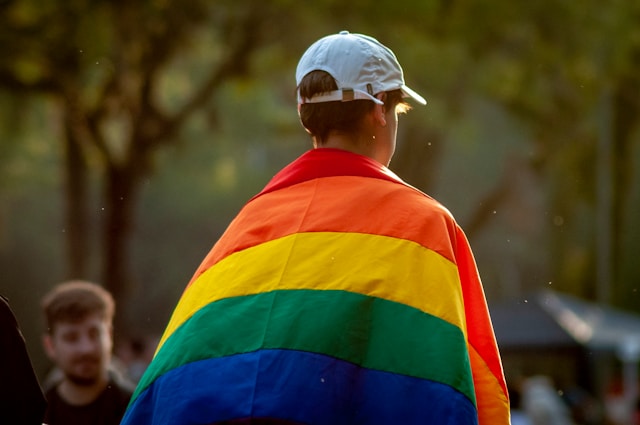The lead-up to an election often sparks a mix of anticipation and unease, but for Barrie’s LGBTQ2S community, this year’s campaign carries heavier implications.
In the heart of Barrie, a city known for its vibrant diversity, discussions surrounding the upcoming federal election have taken on a unique urgency. The political climate, heavily influenced by divisive rhetoric crossing the border from the United States, has left many LGBTQ2S residents concerned about how policies might shift in ways that could undermine their rights and safety. The chalk-drawn trans flag at a recent protest outside Barrie City Hall symbolized a community standing resilient amidst uncertainty, yet it also served as a stark reminder of the fragility of progress.
Mitchell LaFramboise, better known within the community as Justine D’as, embodies this tension. As an active advocate for LGBTQ2S rights in Simcoe County, LaFramboise expressed a growing wariness over the choices available in this election. “We’re faced with options that promise inclusion on paper but often fall short in action,” they commented. For many like LaFramboise, the concern isn’t just about individual policies but about the broader narratives that are given life during election cycles—narratives that can either validate or vilify minority groups.
The undercurrents of fear are not unfounded. Last year, Barrie residents witnessed contentious debates surrounding gender inclusivity in schools, sparked by external influences from U.S. anti-trans legislation. These debates spilled over into local discourse, highlighting how international political climates can seep into and shape Canadian policies at both federal and community levels. With the election drawing near, there’s a palpable anxiety about whether similar pressures will resurface and how they might manifest in policy.
Meanwhile, Barrie’s history as a city that prides itself on inclusivity adds complexity to the issue. Events like Pride celebrations and progressive pushes for better representation in schools and workplaces are points of pride for the community, yet they also make the city a microcosm of the larger political debates playing out nationwide. On one hand, Barrie stands as a beacon of progress; on the other, its residents remain vigilant against the creeping influence of exclusionary ideologies.
For voters, the stakes this election are high. Policies on diversity, equity, and inclusion are not just campaign promises—they are safety nets for marginalized communities. Yet, as the campaign has unfolded, these issues often seem overshadowed by economic concerns and foreign policy debates. The LGBTQ2S residents of Barrie have made it clear: their voices deserve more than a fleeting mention in political manifestos. They demand genuine commitment and action that safeguards their rights and fosters true inclusivity.
As Canadians prepare to head to the polls on April 28, the message from Barrie’s LGBTQ2S community is clear: elections are more than political exercises; they are moral compasses that reflect the values society chooses to uphold. Whether the results will bring hope or heighten apprehensions depends not only on elected officials but on the electorate’s willingness to prioritize inclusivity and equity in their choices.
References:
Simcoe County LGBTQ2S folks wary over U.S. anti-trans policy

